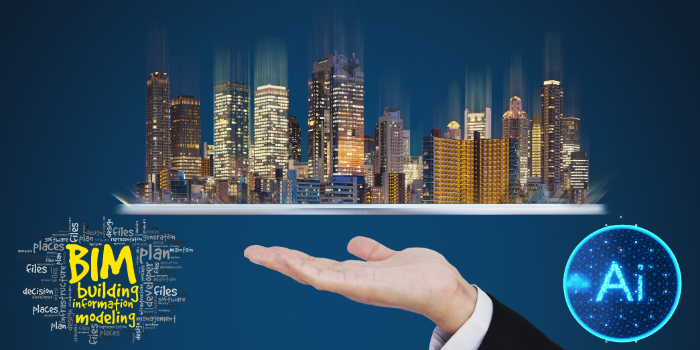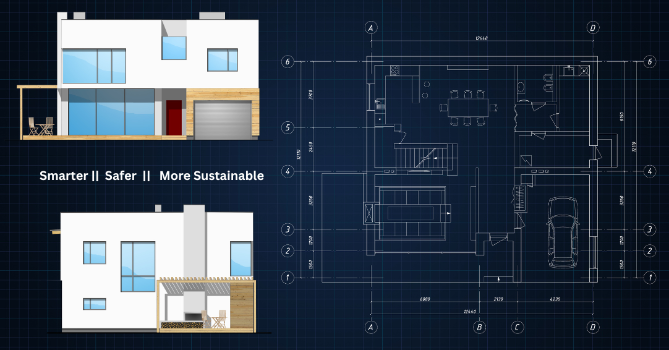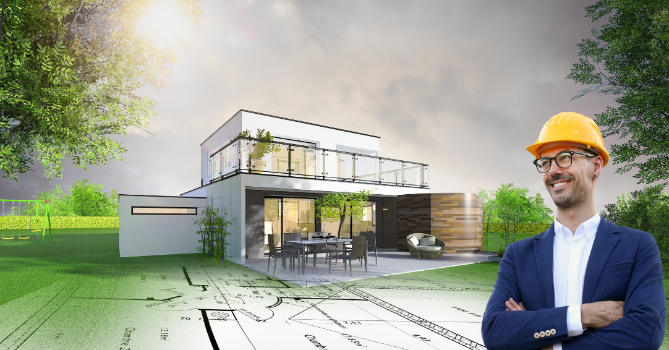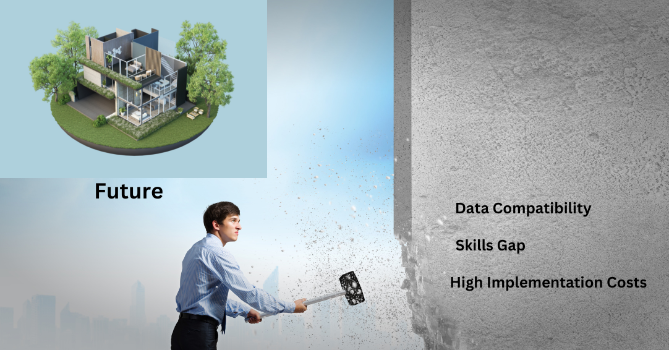
Intelligent Building Planning System Based on BIM and Artificial Intelligence
Introduction
The construction industry is changing fast. Traditional planning methods are becoming less effective. Projects are getting more complex, and client expectations are rising. This is where intelligent building planning comes in. Combining Building Information Modeling (BIM) and Artificial Intelligence (AI) helps create smarter and more efficient project plans. BIM brings detailed 3D models that provide a clear view of every building element. AI adds a layer of automation and insight that saves time and reduces errors.
Together, these technologies help project teams make better decisions. They automate repetitive tasks and predict potential problems before they happen. This improves overall efficiency and reduces costs. Adopting an intelligent planning system isn’t just a trend. It’s becoming a necessity for companies that want to stay ahead. In this article, we’ll explore how BIM and AI work together to transform building planning and why it’s crucial for the future of construction.
Understanding Intelligent Building Planning
Intelligent building planning involves creating detailed project plans using advanced technologies like BIM and AI. It goes beyond traditional methods by focusing on data-driven decisions. This means using technology to gather, analyze, and optimize project information from start to finish.

BIM serves as the backbone of intelligent building planning. It’s a digital representation of a building’s physical and functional characteristics. With BIM, architects, engineers, and contractors can see every aspect of the project before it’s built. They can identify design flaws, coordinate better, and reduce costly rework.
But BIM alone isn’t enough. That’s where AI steps in. AI enhances BIM by adding predictive capabilities. For example, it can forecast project delays or suggest the most efficient way to allocate resources. This leads to smarter project management and smoother execution.
Together, BIM and AI create a powerful system that improves accuracy and efficiency. They enable project teams to work together more effectively, making the entire process faster and more transparent. Intelligent planning reduces risks and ensures that the final building meets all specifications and standards.
In essence, intelligent building planning is about leveraging technology to make informed decisions. It’s not just about building a structure—it’s about doing it smarter, safer, and more sustainably.
The Role of AI in Enhancing BIM for Building Planning
AI adds a whole new dimension to BIM. While BIM is excellent for creating detailed 3D models and storing information, AI takes that data and makes it smarter. It helps project teams spot patterns, predict outcomes, and make better decisions faster.

One of the key areas where AI enhances BIM is in clash detection. Normally, detecting clashes between elements like plumbing and electrical systems can take hours of manual work. AI speeds this up by scanning the BIM model and identifying clashes almost instantly. This saves time and minimizes costly changes later in the project.
AI also shines in project scheduling. It analyzes past project data and suggests the best schedule for the current project. It can even predict delays and recommend adjustments, helping project managers stay on track.
Another important use of AI in BIM is automated quantity takeoffs. AI can scan the model and automatically calculate material quantities needed. This leads to more accurate estimates and helps in budgeting.
In short, AI empowers BIM with more intelligence and automation. It cuts down manual work, reduces errors, and brings more predictability to projects. The combination of BIM and AI transforms traditional planning into a proactive and data-driven process that can handle the complexities of modern construction.
Benefits of Combining BIM and AI for Intelligent Building Planning
Bringing BIM and AI together offers significant advantages for construction projects. One major benefit is improved project accuracy. BIM provides a detailed digital model, while AI processes this data to identify potential issues early. This helps reduce design errors and costly rework, keeping projects on schedule.
Another advantage is increased efficiency. With AI automating routine tasks like clash detection and scheduling, teams can focus on higher-value activities. This boosts productivity and speeds up project delivery. AI can also analyze vast amounts of data to find the most efficient way to complete tasks, leading to smoother operations.

BIM and AI also contribute to better resource management. AI can predict material needs, workforce requirements, and equipment utilization based on BIM data. This minimizes waste and ensures resources are used efficiently, cutting down on unnecessary costs.
Furthermore, the combination of BIM and AI supports sustainability. AI can simulate energy consumption and suggest design modifications to improve efficiency. This helps create buildings that are not only functional but also environmentally friendly.
Lastly, adopting BIM and AI makes projects more future-ready. As the industry moves toward digital transformation, companies using these technologies will be better positioned to adapt to new trends and client demands.
Overall, BIM and AI together provide a comprehensive solution that boosts project performance, reduces risks, and delivers long-term value.
Case Studies and Real-World Applications
Several real-world projects show how BIM and AI can transform building planning. For instance, in a large-scale hospital project, AI integrated with BIM helped identify over 200 design clashes before construction began. This early detection saved the project team months of rework and prevented significant delays.

In another case, a commercial building project used AI-powered BIM to optimize scheduling. The AI analyzed historical project data and recommended a streamlined construction timeline. As a result, the project was completed three weeks ahead of schedule, leading to substantial cost savings.
AI and BIM have also been used to enhance sustainability in residential developments. By simulating different design scenarios, the AI suggested modifications that reduced energy consumption by 15%. This not only lowered operational costs for the building but also made it more environmentally friendly.
These examples highlight the practical benefits of combining BIM and AI. Whether it’s preventing design conflicts, improving timelines, or enhancing sustainability, real-world applications prove that these technologies work. They help project teams achieve better results and make smarter decisions throughout the project lifecycle.
Overcoming Challenges and Future Trends
Implementing BIM and AI together comes with its own set of challenges. One of the main hurdles is data compatibility. BIM models need to be structured in a way that AI can process efficiently. If the data isn’t organized properly, it can lead to inaccurate predictions and analysis.
Another challenge is high implementation costs. Integrating AI into existing BIM systems often requires significant investment in software, hardware, and training. Smaller companies may find it difficult to adopt these technologies without sufficient resources or expertise.

There’s also a skills gap to consider. Many professionals in the construction industry are not yet familiar with AI applications. This can slow down adoption and reduce the effectiveness of these systems.
However, the future of BIM and AI is promising. We’re seeing the rise of digital twins, which create virtual replicas of physical buildings for real-time monitoring and simulations. AI-driven project management is also gaining traction, offering smarter scheduling and risk assessment tools.
As these technologies evolve, they will become more accessible and cost-effective. Overcoming current challenges will pave the way for more widespread use of BIM and AI, making intelligent building planning a standard practice in the construction industry.
Conclusion
BIM and AI together create a smarter way to plan and execute construction projects. BIM brings structure and visualization, while AI adds predictive power and automation. This combination improves accuracy, efficiency, and resource management across projects.
Although there are challenges like data compatibility and high costs, the benefits far outweigh them. Real-world applications show how these technologies save time, reduce costs, and enhance sustainability. As digital twins and AI-driven project management become more common, the future of intelligent building planning looks bright.
Adopting BIM and AI now means staying ahead of industry trends and being ready for the next wave of construction innovation. It’s time to embrace this change and unlock the full potential of intelligent building planning.